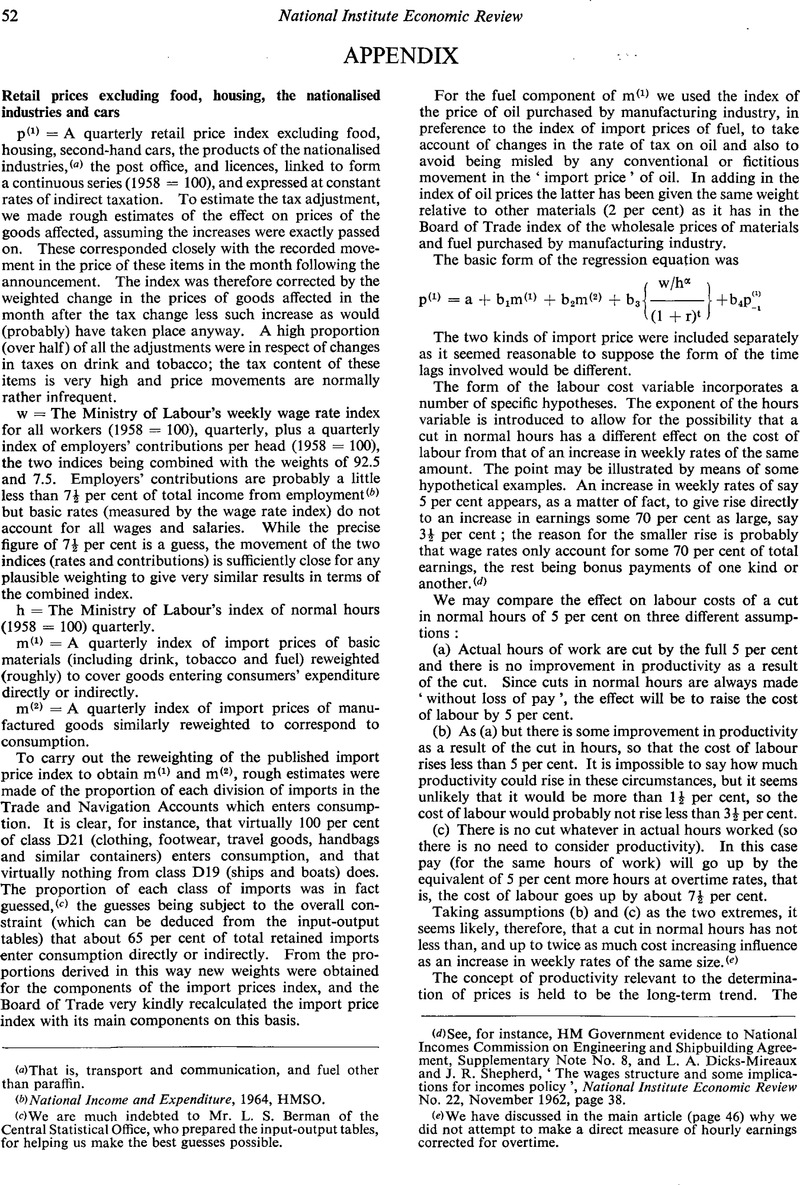Published online by Cambridge University Press: 26 March 2020

Note (a) page 52 That is, transport and communication, and fuel other than paraffin.
Note (b) page 52 National Income and Expenditure, 1964, HMSO.
Note (c) page 52 We are much indebted to Mr. L. S. Berman of the Central Statistical Office, who prepared the input-output tables, for helping us make the best guesses possible.
Note (d) page 52 See, for instance, HM Government evidence to National Incomes Commission on Engineering and Shipbuilding Agreement, Supplementary Note No. 8, and L. A. Dicks-Mireaux and J. R. Shepherd, ‘The wages structure and some implications for incomes policy’, National Institute Economic Review No. 22, November 1962, page 38.
Note (e) page 52 We have discussed in the main article (page 46) why we did not attempt to make a direct measure of hourly earnings corrected for overtime.
Note (a) page 53 L. M. Koyck, Distributed lags and investment analysis, Amsterdam 1954.
Note (b) page 53 See W. A. H. Godley and J. R. Shepherd, Long-term growth and short-term policy’, National Institute Economic Review No. 29, August 1964, page 26.
Note (a) page 54 These are defined as fruit, vegetables (including potatoes), eggs, milk, and home killed mutton and lamb. An index covering these items is published monthly in the Ministry of Labour Gazette.
Note (a) page 55 For the method of deriving the lag pattern, see R. R. Neild, Pricing and Employment in the Trade Cycle, NIESR Occasional Paper, no. 21, page 12.
Note (a) page 56 This is equal to the value of consumers' expenditure seasonally adjusted divided by the volume of consumers' expenditure seasonally adjusted.